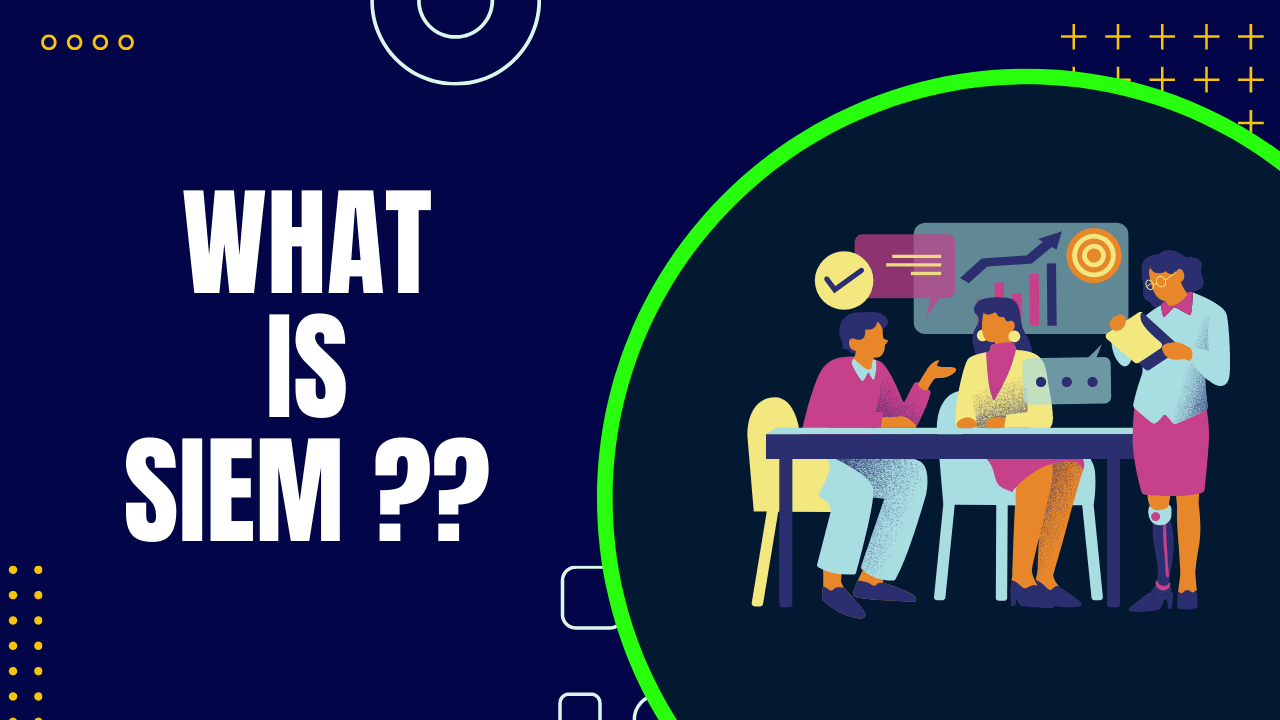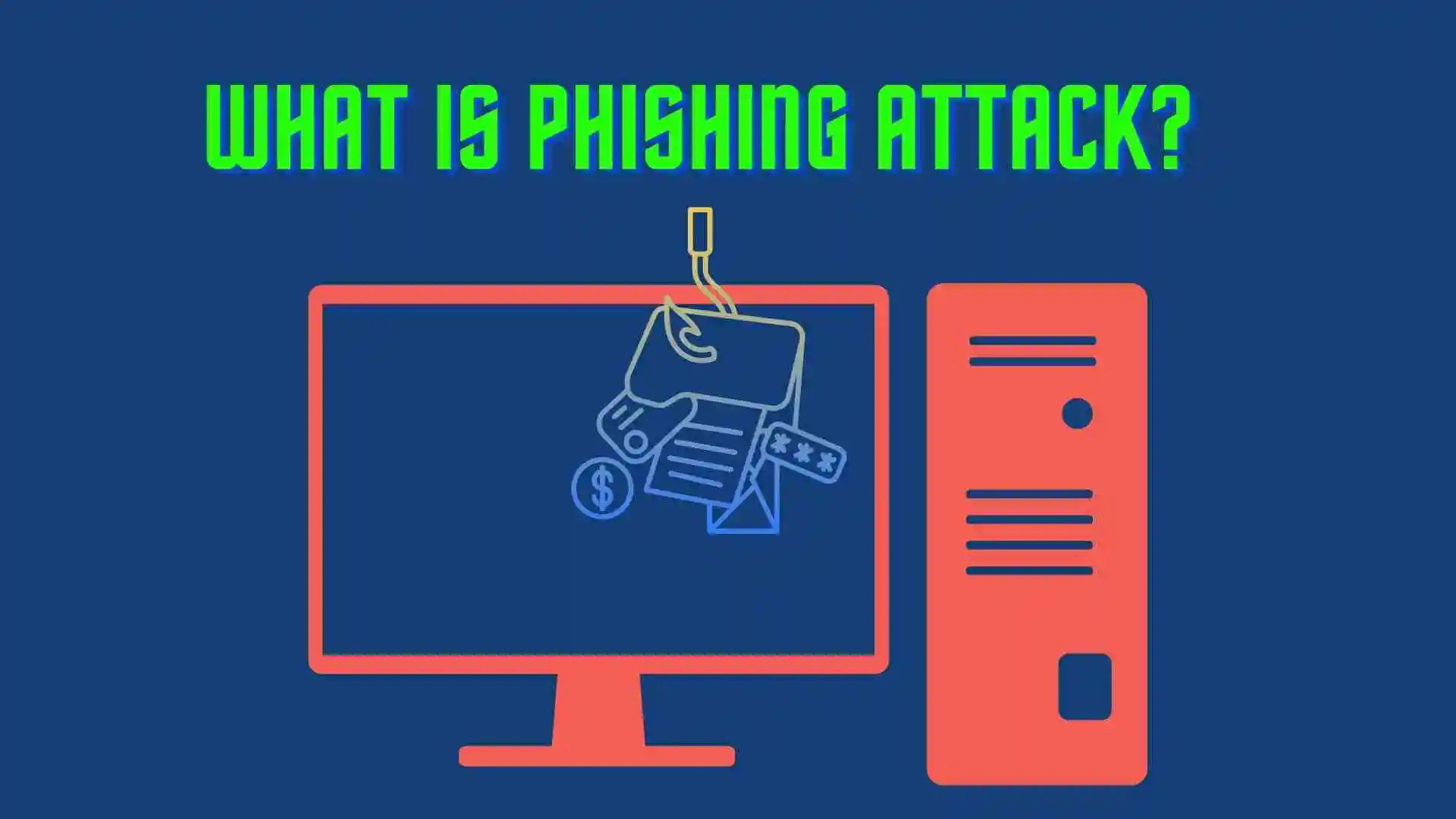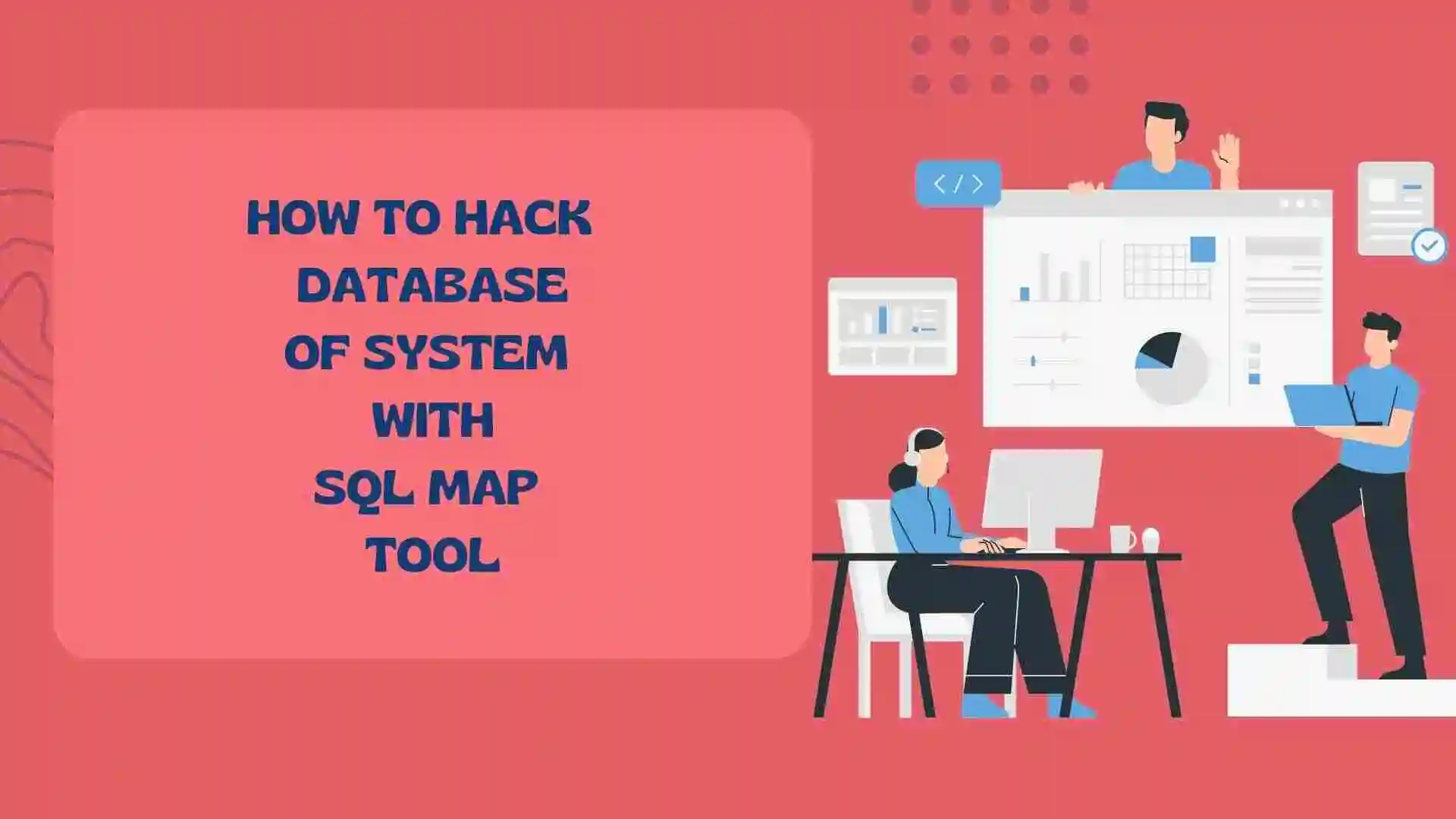In this blog, we will learn about the SIEM (Security Information and Event Management). We will see how SIEM works and their advantages and disadvantages. So let’s get started with the blog.
Table of Contents
- Introduction to SIEM
- How does SIEM Work?
- Advantages of SIEM
- Disadvantages of SIEM
- Tools used for SIEM
- Related Articles on Computer Networks
- Recent Articles on Computer Networks
Introduction to SIEM
SIEM stands for Security Information and Event Management. It refers to a set of technologies, processes, and practices that help organizations collect, analyze, and respond to security events and incidents within their information technology (IT) infrastructure.
The main purpose of a SIEM system is to provide a centralized and comprehensive view of an organization’s security posture by collecting and correlating security event data from various sources, such as network devices, servers, applications, and security appliances. It helps organizations identify and respond to security threats, monitor compliance with security policies and regulations, and investigate security incidents.
How does SIEM Work?
SIEM (Security Information and Event Management) systems work by collecting, aggregating, correlating, and analyzing security event data from various sources within an organization’s IT infrastructure.
Here’s a step-by-step overview of how SIEM works:
1) Data Collection:
SIEM systems collect security event data from diverse sources, such as firewalls, IDS/IPS, antivirus software, servers, endpoints, network devices, and applications. These sources generate logs, alerts, and other security event information.
2) Log Management:
The collected data is centralized and stored in a secure repository known as a log management system. The logs are indexed, time-stamped, and archived for future reference.
3) Normalization and Parsing:
SIEM systems parse and normalize the collected data to convert it into a consistent format. This process ensures that events from different sources are structured uniformly, making them easier to analyze and correlate.
4) Event Correlation:
The SIEM system correlates events by analyzing the normalized data. Correlation involves examining events from multiple sources and identifying relationships, patterns, and anomalies. Correlated events help identify potential security incidents that might go unnoticed when viewed individually.
5) Threat Detection:
SIEM systems use various methods to detect potential threats and attacks. These methods include rule-based detection, which matches events against predefined rules or signatures, and anomaly detection, which identifies deviations from normal patterns of behavior. Advanced SIEM systems also employ machine learning algorithms and behavior analysis to detect unknown or emerging threats.
6) Alert Generation:
When a potential security threat or incident is detected, the SIEM system generates alerts or notifications. These alerts can be configured to trigger in real time or based on specific conditions or thresholds. The alerts typically contain relevant information about the event, such as the source, destination, timestamp, severity, and description of the event.
7) Incident Response:
Upon receiving alerts, security analysts or incident response teams investigate and respond to the identified security incidents. The SIEM system assists in this process by providing contextual information, historical data, and forensic analysis capabilities to aid in the investigation and containment of the incident.
8) Reporting and Compliance:
SIEM systems offer reporting capabilities to generate predefined or customized reports. These reports provide insights into security events, trends, compliance status, and other metrics. Compliance reports help organizations demonstrate adherence to industry standards and regulatory requirements.
9) Forensic Analysis:
SIEM systems store historical event data, allowing security teams to conduct forensic analysis. Investigators can search, filter, and analyze logs to reconstruct the sequence of events, identify the root cause, understand the extent of the incident, and gather evidence for further action or legal purposes.
Continuous monitoring, fine-tuning of correlation rules, and regular updates to the SIEM system are essential to maintain its effectiveness in detecting and responding to evolving security threats. SIEM systems play a crucial role in enhancing an organization’s security posture by centralizing security event information, providing real-time monitoring, and facilitating efficient incident response.
Advantages of SIEM
Some of the key advantages of SIEM include:
A) Centralized Security Visibility:
SIEM provides a centralized view of an organization’s security posture by collecting and aggregating security event data from various sources. This visibility enables security teams to have a comprehensive understanding of the organization’s IT infrastructure and identify potential threats or vulnerabilities.
B) Threat Detection and Incident Response:
SIEM systems employ advanced analytics and correlation techniques to detect and respond to security incidents in real-time. By analyzing event data from multiple sources, SIEM can identify patterns, anomalies, and indicators of compromise, allowing organizations to respond promptly and effectively to mitigate potential risks.
C) Early Warning System:
SIEM acts as an early warning system by generating alerts and notifications when specific security events or conditions occur. This proactive approach enables organizations to address security incidents before they escalate, minimizing the impact and potential damage.
D) Efficient Log Management:
SIEM systems provide efficient log management capabilities, allowing organizations to collect, store, and manage large volumes of security event logs. This centralized log management simplifies log analysis, facilitates forensic investigations, and helps meet regulatory compliance requirements.
E) Compliance Monitoring and Reporting:
SIEM systems assist organizations in monitoring and demonstrating compliance with industry regulations and standards. They provide predefined reports and enable the generation of custom reports, helping organizations track their adherence to security policies and regulatory requirements.
F) Incident Investigation and Forensic Analysis:
SIEM systems store historical log data, enabling security teams to perform detailed incident investigations and forensic analysis. This capability facilitates the reconstruction of security incidents, identification of attack vectors, and gathering of evidence for legal or regulatory purposes.
G) Operational Efficiency:
SIEM systems automate many security monitoring and analysis tasks, improving operational efficiency for security teams. By reducing manual effort in log analysis and correlation, SIEM enables security professionals to focus on critical tasks such as incident response, threat hunting, and vulnerability management.
H) Scalability and Flexibility:
SIEM solutions can scale to handle large volumes of log data and can be tailored to the specific needs of organizations. They can accommodate diverse IT environments, integrate with different security tools, and support customization to adapt to evolving security requirements.
I) Threat Intelligence Integration:
SIEM systems can integrate with threat intelligence feeds and external sources of information. This integration enhances the system’s ability to detect and respond to emerging threats by leveraging up-to-date threat intelligence and indicators of compromise (IOCs).
Overall, SIEM systems provide organizations with improved threat detection, incident response capabilities, regulatory compliance support, and operational efficiency. By centralizing and analyzing security event data, SIEM empowers organizations to proactively manage their cybersecurity risks and protect their critical assets and sensitive information.
Disadvantages of SIEM
Here are some of the key disadvantages of SIEM:
A) Complexity and Implementation Challenges:
SIEM systems can be complex to implement and configure properly. They require expertise in security operations, log management, and system integration. Organizations may face challenges in defining correlation rules, optimizing performance, and ensuring compatibility with their existing IT infrastructure.
B) High Costs: SIEM solutions can be expensive to acquire, deploy, and maintain. The initial investment includes licensing fees, hardware requirements, and implementation costs. Ongoing expenses involve staffing and training security personnel, system maintenance, and updates. Small and medium-sized organizations with limited budgets may find it challenging to afford a comprehensive SIEM deployment.
C) System Performance Impact:
Implementing a SIEM system can introduce additional network and system overhead due to the continuous collection, processing, and analysis of security event data. In some cases, this can impact the performance of the monitored systems, leading to latency or resource utilization issues. Proper capacity planning and system optimization are crucial to mitigate performance impacts.
D) Continuous Monitoring and Maintenance:
SIEM systems require continuous monitoring, maintenance, and updates to remain effective. Regular review and updating of correlation rules, threat intelligence feeds, and system configurations are necessary to keep pace with evolving threats and security requirements. Failure to maintain and update the system may result in reduced effectiveness and increased security risks.
Tools used for SIEM
There are several SIEM (Security Information and Event Management) tools available in the market, each offering unique features and capabilities. Here are brief descriptions of some popular SIEM tools:
A) Splunk Enterprise Security:
Splunk is a widely-used SIEM solution that provides real-time monitoring, event correlation, and threat intelligence integration. It offers a user-friendly interface for log management, customizable dashboards, and robust reporting capabilities. Splunk Enterprise Security includes features like anomaly detection, incident response workflows, and integration with threat intelligence feeds.
B) IBM QRadar:
IBM QRadar is a comprehensive SIEM platform that offers threat detection, log management, and compliance reporting. It includes advanced analytics, behavior-based anomaly detection, and built-in threat intelligence. QRadar features customizable dashboards, correlation rules, and automated incident response capabilities. It also supports integration with third-party security tools.
C) Elastic SIEM:
Elastic SIEM is part of the Elastic Stack, an open-source solution that offers log management, search capabilities, and SIEM functionalities. It provides real-time event correlation, threat detection, and incident response workflows. Elastic SIEM leverages Elasticsearch for fast log indexing and searching, and Kibana for data visualization and dashboards.
D) SolarWinds Security Event Manager (SEM):
SolarWinds SEM is a SIEM platform that offers log management, event correlation, and compliance reporting. It includes real-time threat intelligence, automated response actions, and user activity monitoring. SEM provides customizable dashboards, predefined rules, and regulatory compliance reports.
E) ArcSight:
ArcSight, now part of Micro Focus, is a SIEM solution that provides log management, event correlation, and security analytics. It offers real-time threat detection, behavior profiling, and predictive analytics. ArcSight features customizable dashboards, advanced correlation rules, and compliance reporting capabilities.
These are just a few examples of SIEM tools available in the market, and each tool may have additional features and functionalities. When selecting a SIEM tool, it’s important to consider factors such as the organization’s specific needs, budget, scalability, ease of use, and integration capabilities with existing security infrastructure.
Related Articles on Computer Networks
- Introduction to Computer Networking | What is Computer Network
- What are Topology & Types of Topology in Computer Network
- What is FootPrinting in Cyber Security and its Types, Purpose
- Introduction to Cloud Computing | What is Cloud Computing
- Distributed Shared Memory and its advantages and Disadvantages
- What is VPN? How doe VPN Work? What VPN should I use?
- What is an Internet and How the Internet Works
- What is a Website and How Does a Website or web work?
- Introduction to Virus and different types of Viruses in Computer
- What is TCP and its Types and What is TCP three-way Handshake
- What is UDP Protocol? How does it work and what are its advantages?
- What is an IP and its Functions, What is IPv4 and IPv6 Address
- What is MAC Address and its Types and Difference MAC vs IP
- What is ARP and its Types? How Does it Work and ARP Format
- Sessions and Cookies and the Difference Between Them
- What is ICMP Protocol and its Message Format?
- What is Big Data? Characteristics and Types of Big Data
- Disciplines of CyberSecurity | What are the goals of CyberSecurity?
- What is Firewall, Features, Types and How does the Firewall Work?
- Network Scanning, Types, and Stealth Scan in Computer Network
- Cryptography and its Types in Ethical Hacking
- Tor Browser and How does it Work | Onion Router Tutorial
- Proxy Server, Advantages, Difference between Proxy Server & VPN
- DHCP Protocol and What Are the Pros and Cons of DHCP
- Intrusion Detection System(IDS) and What are the types of IDS
- Domain Name Server, How Does It Work, and its advantages
- Telnet: Introduction, How Does it Work, and Its Pros and Cons
Recent Articles on Computer Networks
- Dirb Command Kali Linux | Dirb: A Web-Content Scanner
- Introduction to Burp Suite | How to Download Burp Suite in Linux
- What is Tmux? | Introduction to Tmux
- Introduction to Termux | Termux Introduction
- EyeZy: How to log in to other Emails without receiving a Notification.
- Nmap Scanning Tool in Cyber Security with Nmap Cheatsheet
- WPScan Full Tutorial in 10 minutes| How to scan with WPScan
- Modules and Components of Metasploit Framework
- Data Packet Capture and Filters in WireShark
- Tshark: An Alternative for WireShark and How to use it
- SqlMap command in CyberSecurity | SQL Injection Attack Tool
- Hydra Tool Full Guide | Learn Hydra Command Tutorial
- John the Ripper Tool | How to crack the Password of Files
- Nikto Tool Web Vulnerability Scanner That Every Hacker Uses




